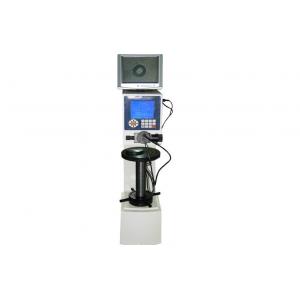

Add to Cart
Video-Eye Hardness Measuring System is a set of video measurement device to update the traditional optical Brinell hardness tester, Vickers hardness tester, Micro Vickers hardness tester, and Knoop hardness tester as vision hardness tester, it is composed of Eyepiece-Measuring-Camera: #823-811 and Display Monitor: #823-821.
When the optical hardness tester is equipped with this device, the
indention is displayed on the monitor #823-821 magnificately, the
indention will be observed by many inspectors simultaneously, it
makes the measurement of indention more intuitively and accurately,
and it reduces operator’s eye fatigue and error to improve the work
efficiency obviously.
It can be used to update the following models:
Digital Vickers hardness tester: HV-5 Series, HV-10 Series, HV-30
Series and HV-50 Series
Digital Micro Vickers hardness tester: HVS-1000 Series, SMHV-1000/
2000Series, etc.
Digital Brinell hardness tester: SHB-3000C
Principle of Brinell Test:
The Brinell hardness test method consists of indenting the test
material with a 10 mm diameter hardened carbide ball subjected to a
load of 3000 kg. For softer materials the load can be reduced to
1500 kg or 500 kg to avoid excessive indentation.
The full load is normally applied for 10 to 15 seconds in the case
of iron and steel and for at least 30 seconds in the case of other
metals. The diameter of the indentation left in the test material
is measured with a low powered microscope. The Brinell harness
number is calculated by dividing the load applied by the surface
area of the indentation.
The diameter of the impression is the average of two readings at
right angles and the use of a Brinell hardness number table can
simplify the determination of the Brinell hardness. A well
structured Brinell hardness number reveals the test conditions, and
looks like this, "75 HB 10/500/30" which means that a Brinell
Hardness of 75 was obtained using a 10mm diameter hardened steel
with a 500 kilogram load applied for a period of 30 seconds.
On tests of extremely hard metals a tungsten carbide ball is
substituted for the steel ball. Compared to the other hardness test
methods, the Brinell ball makes the deepest and widest indentation,
so the test averages the hardness over a wider amount of material,
which will more accurately account for multiple grain structures
and any irregularities in the uniformity of the material. This
method is the best for achieving the bulk or macro-hardness of a
material, particularly those materials with heterogeneous
structures.
